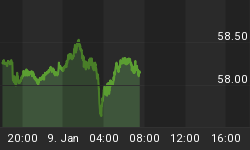Since March 2009, the foreign currency markets have been driven by rising investor appetite for higher risk assets. On Friday, however, the stock market broke its correlation with the Dollar which could be a sign that investors are returning to a more fundamental outlook for the currency markets putting central bank activity back in the forefront.
Last week it was the activity of the Bank of England that primarily moved the foreign currency markets while the European Central Bank also displayed some influence. This week it will be the U.S. Federal Reserve.
On August 6th, the Bank of England shocked the foreign currency markets with an $84 billion increase in its quantitative easing program. This came as a surprise to many traders who believed that the economy was on the brink of stabilization. Pre-meeting surveys even showed that a growing contingent of analysts was looking for the BoE to at least announce a temporary end to the program.
This was not the case. However, as BoE officials felt that weak economic conditions along with tight credit were reasons enough to maintain the program in order to keep growth on track to meet the central bank's 2% inflation target. This move sent a signal to investors that the outlook for economic growth will be gloomy.
The September British Pound broke sharply from its high for the year on the news and technically formed a closing price reversal top on the weekly chart which could be a sign of lower prices to follow.
More bearish news was released this morning that could help to confirm the reversal top and send the British Pound on its way to a substantial correction. In Monday's edition of the Telegraph, it was reported that the Bank of England will downgrade its growth forecasts and issue a warning that the U.K. economy risks falling into a debt deflation trap.
The main concern for the Bank of England is the risk that the U.K. economy will see another downturn later in the year. This scenario would eliminate any of the economic gains that the U.K. economy has seen so far this year and put the country into a bearish economic cycle very similar to what the Japanese economy experienced in the 1990's.
According to the Telegraph article, BoE Governor Mervyn King will use the Bank's Inflation Report on Wednesday to explain the reasoning behind the BoE's decision to extend its asset buyback program.
The combination of the Bank of England's actions and the technical formation suggests that a bearish scenario is developing. According to the chart, there is plenty of room to the downside. Based on the main range of 1.3700 to 1.7043, this contract could correct back to 1.5372 to 1.4977 over the near-term.
















